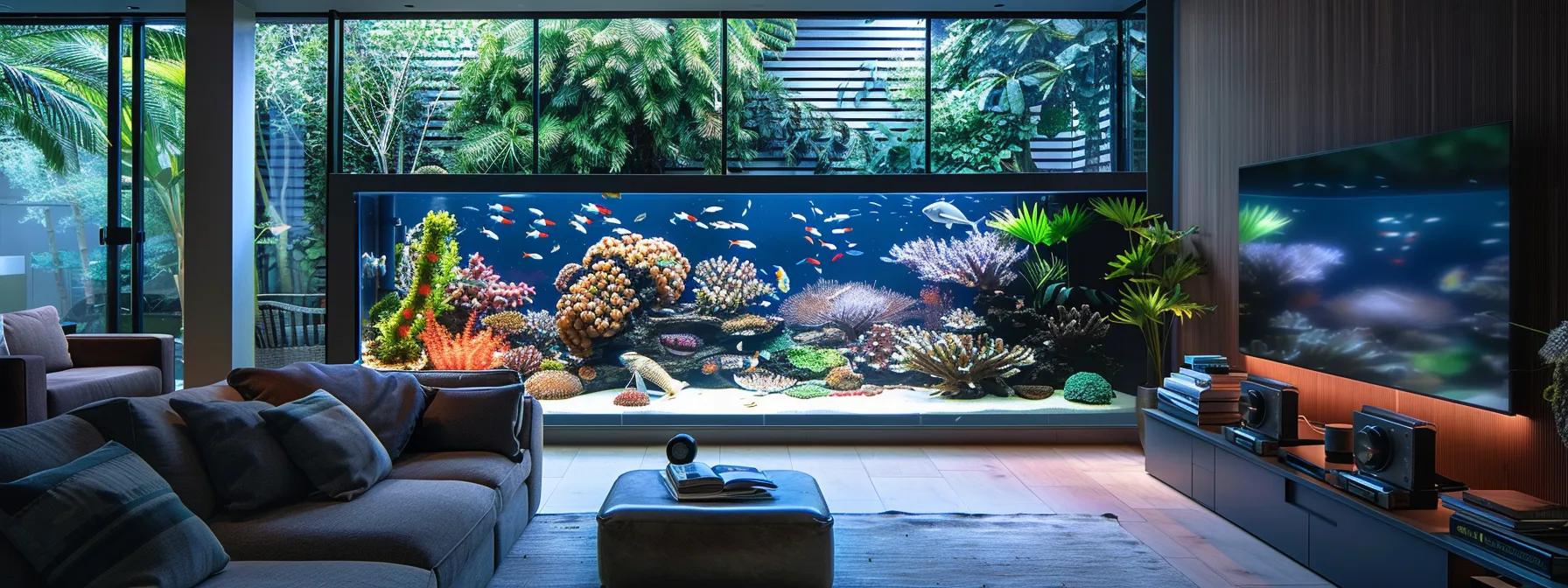
How to Set Up Your Perfect Aquarium Step by Step
Setting up an aquarium is a rewarding venture that allows hobbyists to create their own slice of aquatic paradise while ensuring a healthy environment for fish and invertebrates. Aquarium enthusiasts face many decisions—from choosing the right tank size to selecting proper equipment, decorating the tank, and maintaining water quality. This article explains how to choose the right aquarium, the essential equipment required, step-by-step setup instructions, tips for selecting inhabitants, long-term maintenance techniques, troubleshooting common issues, and advanced techniques to further enhance both aesthetic appeal and functionality. Readers will gain practical insights on designing an ecosystem that pleases the eye and meets the biological and environmental needs of its inhabitants. A well-maintained tank can become a self-sustaining ecosystem where plants, fish, and bacteria interact to maintain balance with minimal intervention. This guide is intended for pet supply enthusiasts, businesses expanding into aquatics, and anyone looking to combine practicality with aesthetic beauty.
How Do I Choose the Right Aquarium for My Needs?
Begin by evaluating your available space, budget, and the type of aquatic life you want to showcase. A larger tank offers stability in water quality and more diverse aquascaping possibilities, while a smaller tank is easier to manage but may limit fish species or ecosystem complexity. Beginners often benefit from starter kits that include the aquarium, filtration system, and lighting. Consider whether you want a saltwater setup for colorful reef species or a freshwater planting aquarium for a natural biotope look. Also, factor in the time you can dedicate to maintenance so the aquarium adapts to your lifestyle without overwhelming tasks.
What Aquarium Sizes and Types Are Best for Beginners?
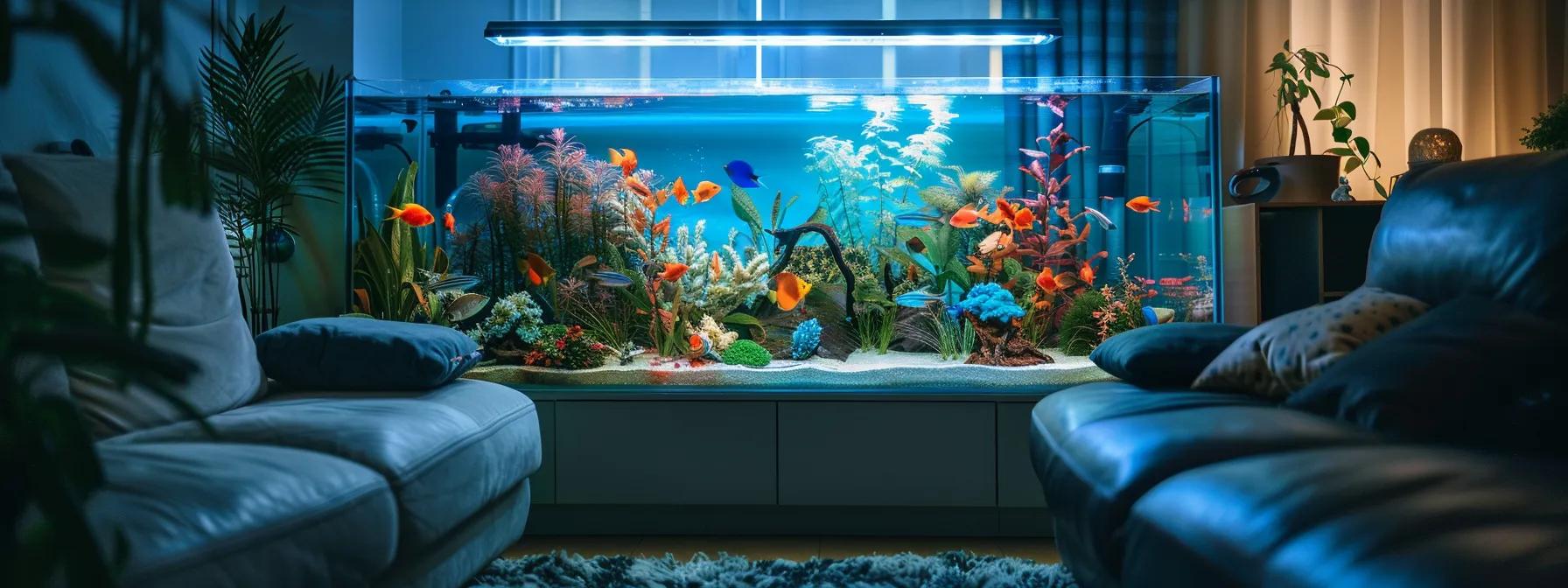
For novices, aquariums between 20 and 55 gallons offer a good balance between stability and manageability. A larger volume of water buffers against rapid changes in water quality, pH, and temperature. Common tank materials include glass—valued for clarity, scratch resistance, and affordability—and acrylic, which is lighter and offers insulation but may be more prone to scratching. Freshwater tanks are recommended for beginners because they are easier to maintain, less costly, and provide a good introduction to the basics of cycling, water quality management, and bioload control. Planted tanks add natural biological filtration and oxygen production, further supporting hardier fish such as tetras, guppies, or bettas.
Should I Choose Freshwater, Saltwater, or Planted Aquariums?
Freshwater aquariums are best for beginners because they require simpler setups and are more forgiving regarding water parameters. Saltwater systems are more complex, needing precise water chemistry, specialized equipment like protein skimmers, and have higher initial costs—better suited for advanced hobbyists. Planted aquariums combine the benefits of both, using live plants to naturally filter water through nitrate absorption while supporting a varied aquatic environment. Your choice depends on your experience level, the desired maintenance commitment, and whether you prefer low-maintenance fishkeeping or an intricate aquascape.
How Do I Select the Best Location for My Aquarium?
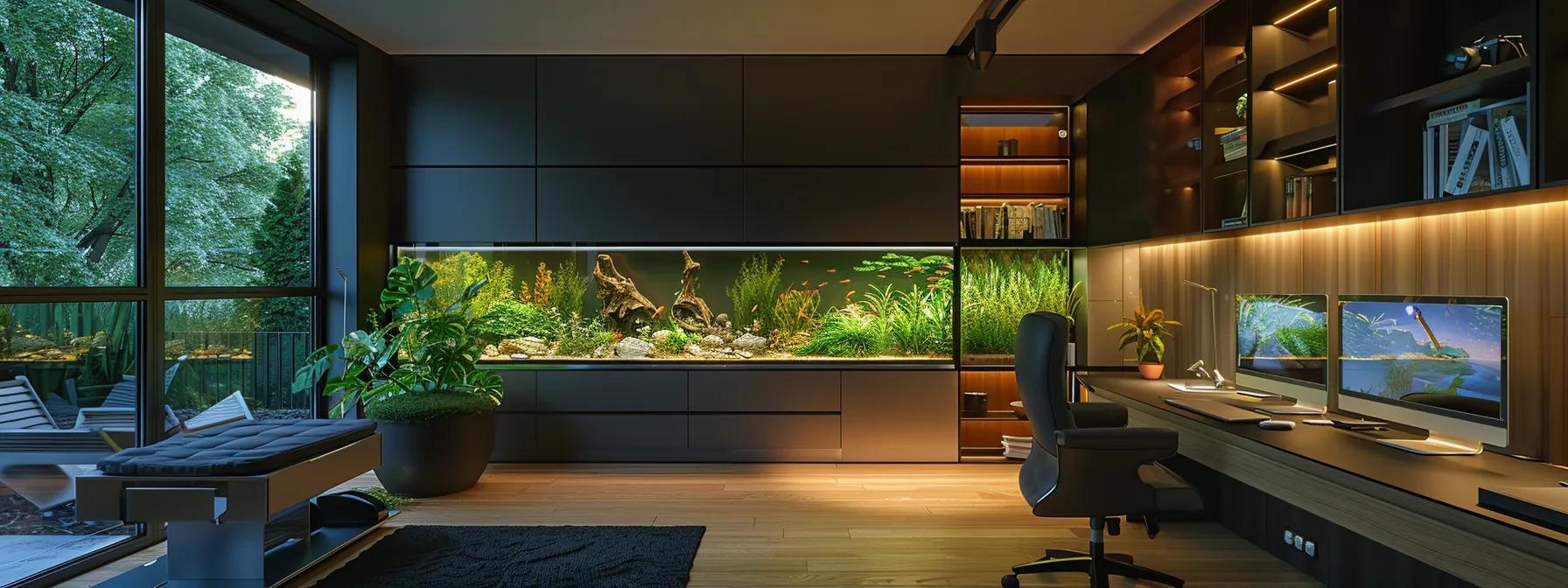
Choose a location away from direct sunlight to prevent algae growth, overheating, and evaporation. An area with ambient, indirect lighting helps maintain consistent water temperature. Ensure the spot offers easy access for routine tasks like water changes, filter cleaning, and equipment adjustments. Avoid high-traffic areas to minimize vibrations and accidental knocks. A nearby electrical outlet is essential for powering pumps, heaters, and lights. Finally, select a stable, level surface that integrates well with your living or office space without obstructing movement or décor.
What Essential Equipment Do I Need to Set Up an Aquarium?
Key equipment includes: • A filtration system that removes physical waste and breaks down toxic substances like ammonia, nitrite, and nitrate. Options include under-gravel, canister, and hang-on-back filters. • A reliable heater to maintain a stable temperature, especially for tropical setups. • Appropriate lighting (LED, fluorescent) that not only enhances visual appeal but also supports plant growth. • A water conditioner to neutralize chlorine and chloramines in tap water. Other helpful tools are a thermometer, substrate vacuum or siphon, and an air pump if extra aeration is needed. In specialized setups, additional equipment like protein skimmers for saltwater, CO₂ systems for planted tanks, and automated dosing systems may be beneficial.
Which Filters, Heaters, and Lights Are Recommended?

For beginners, hang-on-back (HOB) filters are simple to install and provide effective multi-stage filtration. Canister filters, although pricier, offer superior performance for larger tanks or complex biotopes. Submersible heaters with adjustable thermostats are reliable, with a typical requirement of 3–5 watts per gallon. For lighting, modern LED systems are favored due to their energy efficiency, longevity, and customizable spectrum options—ideal for both planted setups and reef aquariums. Choosing the right combination ensures consistent water quality and temperature for optimal fish and plant health.
How Do I Choose the Right Substrate and Decorations?
The substrate anchors plants, provides a medium for beneficial bacteria, and influences water chemistry. For planted tanks, nutrient-rich substrates support robust plant growth, while rounded gravel or fine sand offers a neutral base for fish-only setups. Decorations such as driftwood, rocks, and live or artificial plants enhance the visual appeal and create hiding spots. They also support biological filtration by offering surface area for nitrifying bacteria. Always select materials that are aquarium-safe and pre-clean them to avoid contaminants. Balance function and aesthetics by designing a layout that promotes water circulation and natural shelter for your aquatic inhabitants.
What Are Eco-Friendly and Sustainable Aquarium Products?
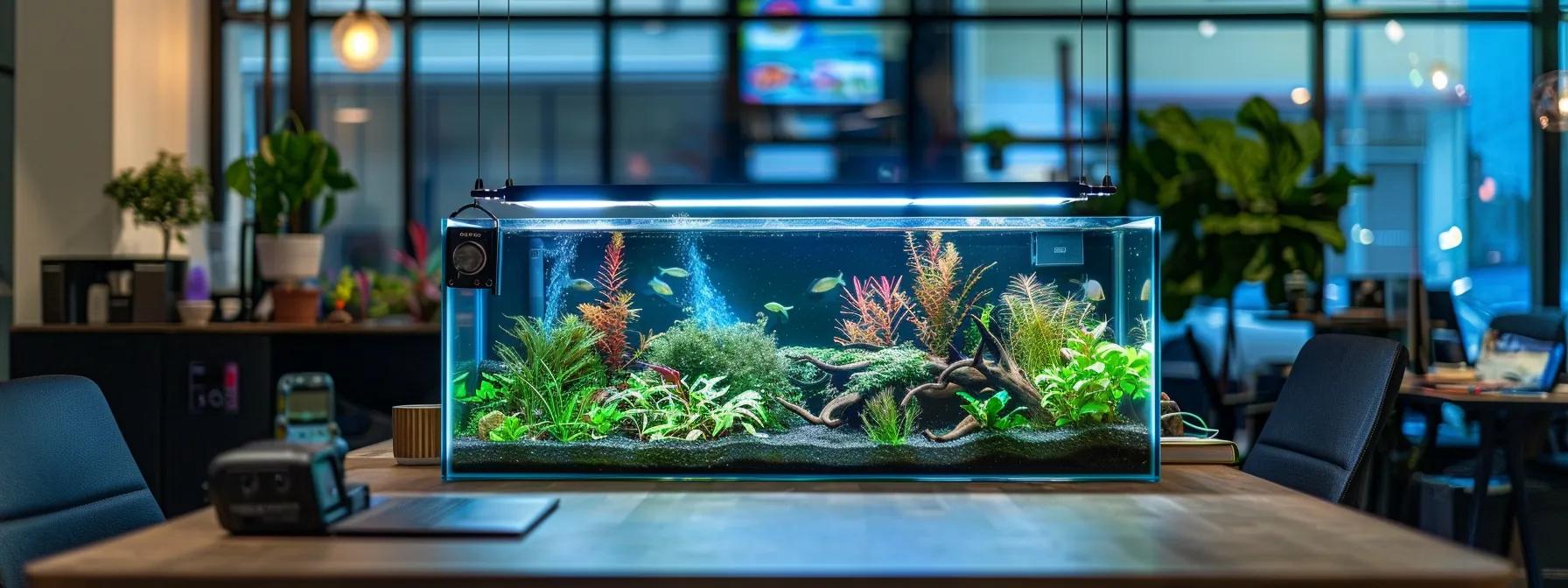
Eco-friendly aquarium products are designed to minimize environmental impact while maintaining high performance. Energy-efficient filters, heaters with energy-saving motors, and LED lighting reduce power consumption. Sustainable substrates made from recycled or natural, non-toxic components provide a greener alternative to traditional gravel. Many companies now offer biodegradable fertilizers, water conditioners free from harsh chemicals, and decorations crafted from reclaimed driftwood or responsibly sourced rocks. Look for eco-labels and certifications to ensure a low environmental footprint, leading to healthier and more balanced aquariums.
How Do I Set Up the Aquarium Step by Step?
- Position your clean, empty tank on a stable, level surface away from direct sunlight and heavy traffic.
- Rinse the substrate (gravel, sand, or aquatic soil) in dechlorinated water to eliminate dust.
- Spread the substrate evenly, creating a layout that serves both aesthetic and functional purposes.
- Add decorations such as driftwood, rocks, and plants to provide hiding spots and boost biological filtration.
- Slowly fill the tank with dechlorinated water, taking care not to disturb the arrangement.
- Install essential equipment—filters, heaters, and lights—ensuring proper placement and submersion of items like heaters.
- Turn on the equipment and allow the system to run, establishing water circulation.
- Finally, add water treatments like conditioners to remove chlorine and chloramines, preparing the tank for the cycling process.
How Should I Prepare the Substrate and Arrange Decorations?
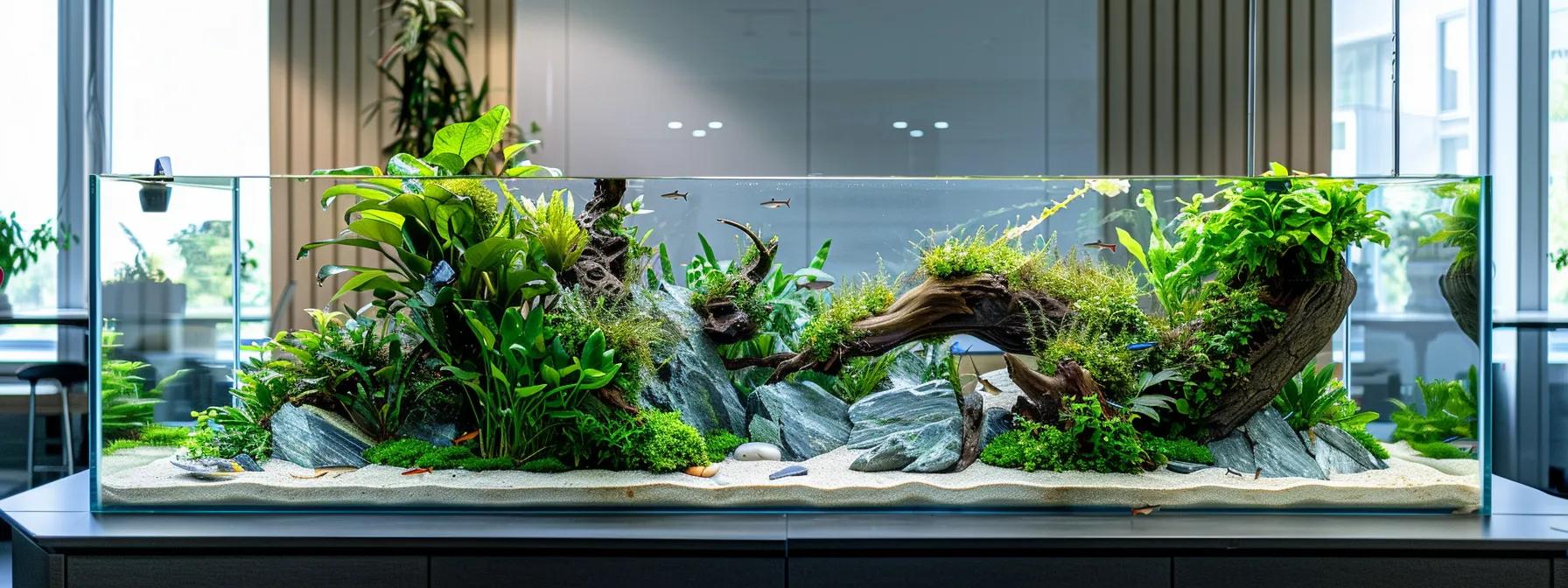
Preparation is key for both visual appeal and function. Rinse the substrate thoroughly to remove dust. Distribute it evenly on the bottom to create a stable base, considering slight contours to promote water flow. Arrange large items such as driftwood and rocks first to form the framework of your aquascape. Position these elements to avoid obstructing filter output while creating balanced focal points. Next, fill gaps with live or artificial plants, ensuring rooted plants are securely planted. A thoughtful layout not only provides shelter for fish but also maximizes the surface area available for beneficial bacteria.
What Is the Aquarium Cycling Process and Why Is It Important?
Cycling is the process of establishing a stable biological filtration system. Beneficial bacteria convert toxic ammonia (from fish waste and decaying matter) into nitrite and then into less harmful nitrate. This process, which can take several weeks, is critical to prevent toxic buildups that can harm or kill fish. Regular testing during cycling helps verify that ammonia and nitrite levels drop while nitrate levels rise. Once stable, the aquarium is considered cycled and safe for fish, providing a long-term foundation for water quality and ecosystem health.
How Do I Add Water and Properly Dechlorinate It?
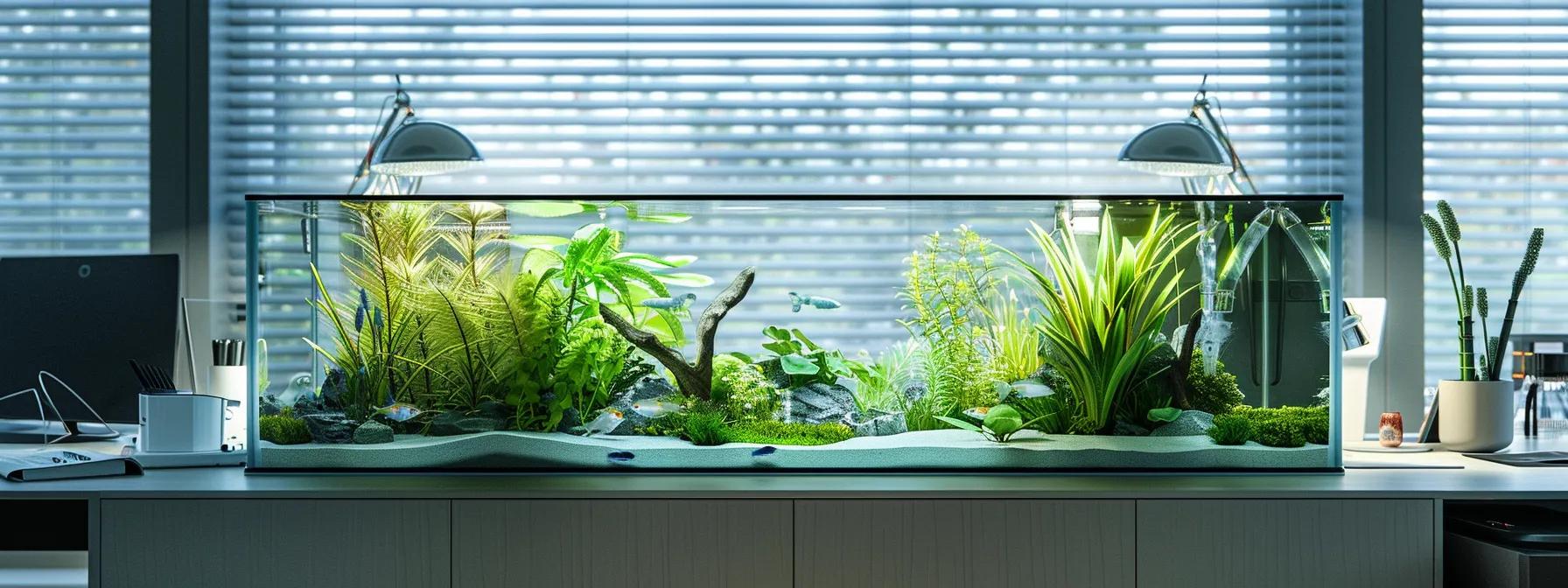
When filling your aquarium, use tap water treated with a water conditioner that neutralizes chlorine, chloramine, and heavy metals. Slowly fill the tank to avoid disturbing the substrate. Periodically check the water level and temperature with a reliable thermometer to maintain an ideal range for your aquatic species. Allow the system to run for several hours after filling and test the water to ensure that all harmful chemicals have been neutralized before introducing fish or plants.
How Do I Install and Configure Equipment Like Filters and Heaters?
After adding water, install key equipment: • Place the filter where it can draw water efficiently from waste-concentrated zones. Follow manufacturer instructions for assembly. • Install the heater in a spot that promotes even heat distribution, and set the thermostat to meet your species’ requirements. • Test the filter and heater to ensure smooth, quiet operation. • Finally, set up the lighting system above the tank and configure any timers or intensity controls as recommended. Proper setup of equipment is critical to maintaining stable water quality and temperature.
How Do I Choose and Add Fish and Other Inhabitants Safely?
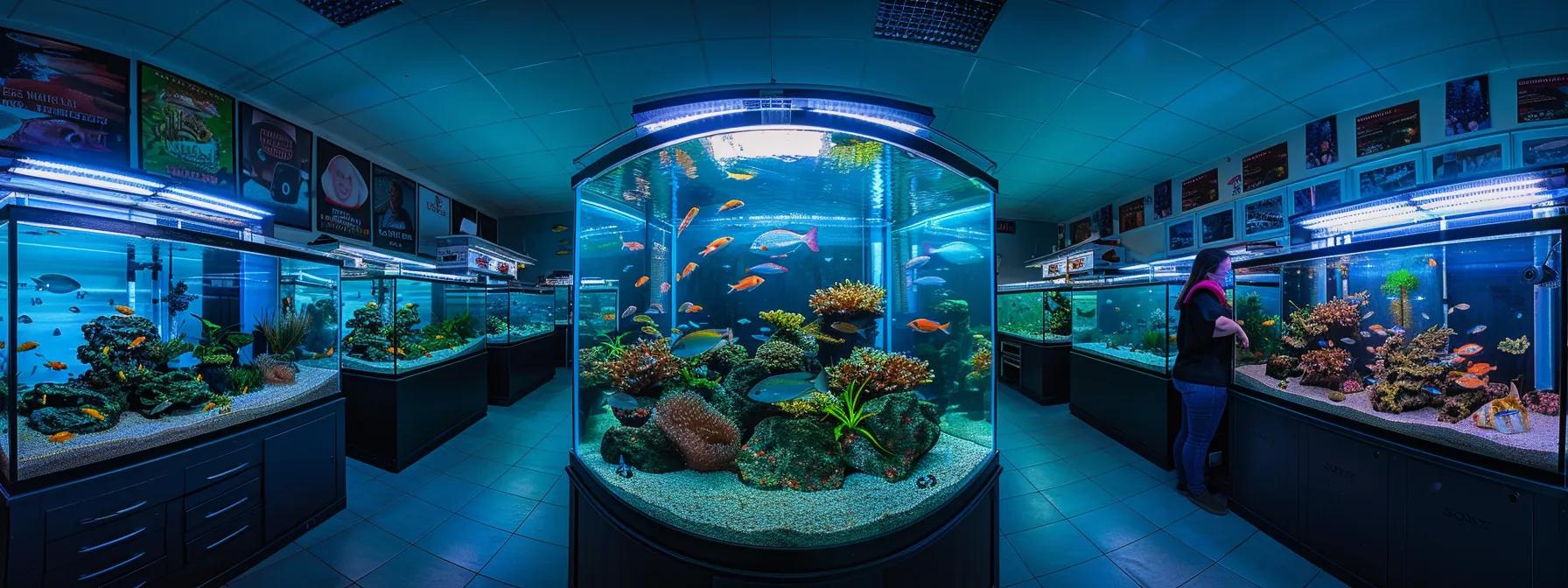
Research compatible fish and invertebrates that suit your tank size and water parameters. For beginners, species such as guppies, tetras, and bettas are hardy and easier to care for. When introducing fish: • Float the sealed bag in the tank for 15–20 minutes to equalize temperature. • Gradually add tank water to the bag over 30–60 minutes to acclimate the fish to the new water chemistry. • Add only a few fish at a time to allow the beneficial bacteria to adjust to the bioload. After the fish acclimate, you can introduce additional invertebrates like snails and shrimp to further balance the ecosystem.
Which Fish Species Are Best for Beginners and Compatible Together?
For community tanks, hardy species such as cardinal tetras, guppies, mollies, platies, and bettas (when kept with peaceful mates) work well together. Cardinal tetras, known for their peaceful schooling behavior, add dynamic movement without creating stress. Guppies are valued for their bright colors and ease of breeding, while mollies and platies diversify the ecosystem and encourage harmonious interactions. Research the optimal temperature, pH, and tank size for each species to ensure compatibility and long-term success.
How Do I Acclimate Fish to My New Aquarium?

Acclimation minimizes stress when transferring fish: • Float the sealed bag in the aquarium for 15–20 minutes to equalize the water temperature. • Slowly mix small amounts (10–20 mL every five minutes) of tank water into the bag over 30–60 minutes. • Once the bag’s volume increases sufficiently, carefully net the fish and release them into the tank, discarding the bag water. Watch for signs of stress such as rapid breathing or erratic swimming and adjust as necessary. A gentle acclimation sets the stage for a thriving aquarium.
What Other Inhabitants Can I Add, Like Snails and Shrimp?
Adding invertebrates such as freshwater snails (e.g., mystery or nerite snails) and shrimp (e.g., cherry or amano) can improve water quality by consuming algae and leftover food. These organisms act as natural cleaners and scavengers. Ensure that the water parameters, temperature, and pH suit both fish and invertebrates. Provide plenty of hiding spots to protect smaller species from larger fish, and acclimate them gradually using the same process as for fish.
How Do I Maintain My Aquarium for Long-Term Health?

Regular maintenance is essential: • Perform weekly or bi-weekly partial water changes (20–30%) to remove waste and reduce nitrates. • Clean the substrate to remove decaying organic matter and prevent ammonia spikes. • Regularly check and clean filter media (without completely sterilizing it) to preserve beneficial bacteria. • Monitor water parameters (pH, ammonia, nitrite, nitrate) using reliable test kits. • Optimize feeding to prevent overfeeding, which can clog the filter and reduce water quality. Consistent upkeep ensures that the aquarium remains a balanced, healthy ecosystem in the long term.
How Often Should I Perform Water Changes and Clean the Filter?
A routine schedule helps maintain water quality: • Partial water changes of 20–30% should ideally occur weekly. • Frequency may vary depending on the tank’s bioload; more populated tanks may require more frequent changes. • Clean the filter every 2–4 weeks, following manufacturer guidelines. When cleaning, gently rinse the biological media in tank water (never tap water) to retain beneficial bacteria. Regular maintenance supports a stable environment for fish and plants.
What Are Best Practices for Feeding My Fish?
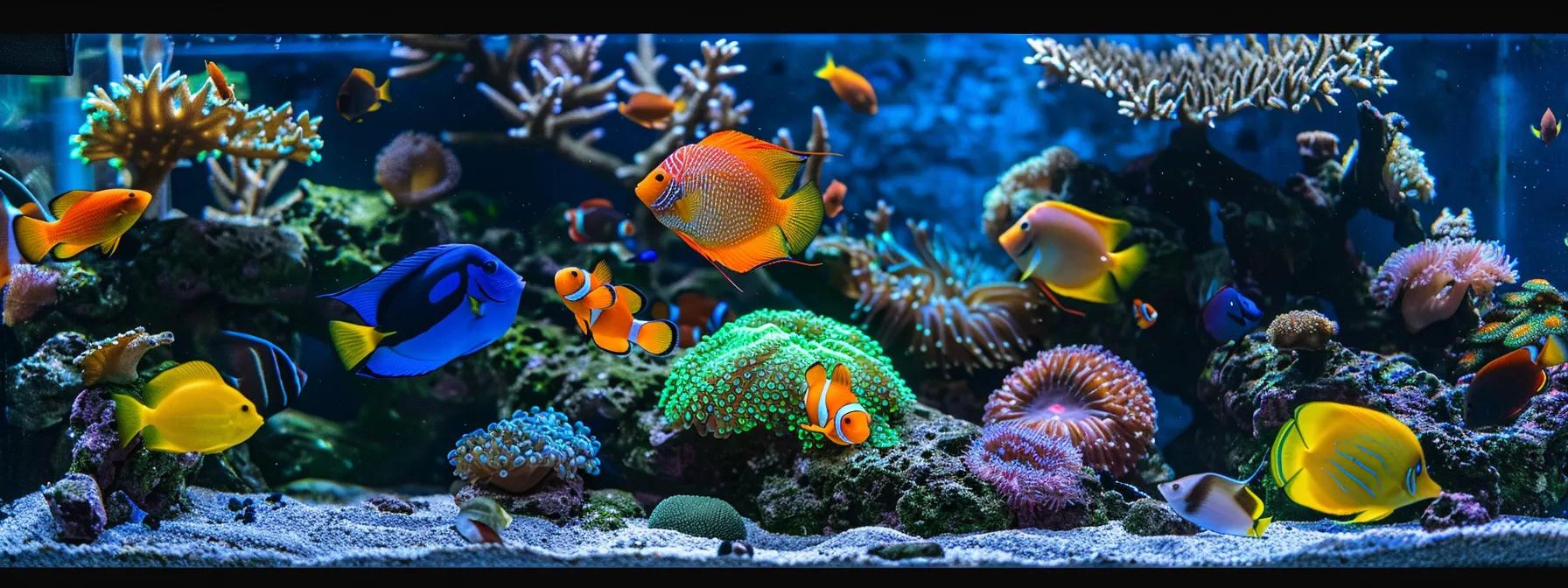
Feed your fish by: • Offering small amounts several times a day rather than one large meal. • Choosing high-quality food tailored to species; tropical fish, bottom dwellers, and herbivores have different dietary needs. • Monitoring feeding to ensure food is consumed within a few minutes, avoiding overfeeding. • Occasionally having a fasting day to help clear fish digestive systems. These practices help prevent excess organic matter that could lead to ammonia spikes and poor water quality.
How Do I Monitor and Adjust Water Parameters?
Regular testing is key: • Use reliable test kits or digital monitors to check pH, ammonia, nitrite, and nitrate levels. • Adjust pH gradually with buffers if levels drift from the optimal range. • Ensure ammonia and nitrite remain near zero, and control nitrate through water changes and plant absorption. • Observe fish behavior for signs of distress (increased respiration, lethargy) and consult test results to decide on adjustments. Keeping a log of these parameters can help detect patterns and maintain a stable environment.
What Are Common Aquarium Problems and How Can I Troubleshoot Them?
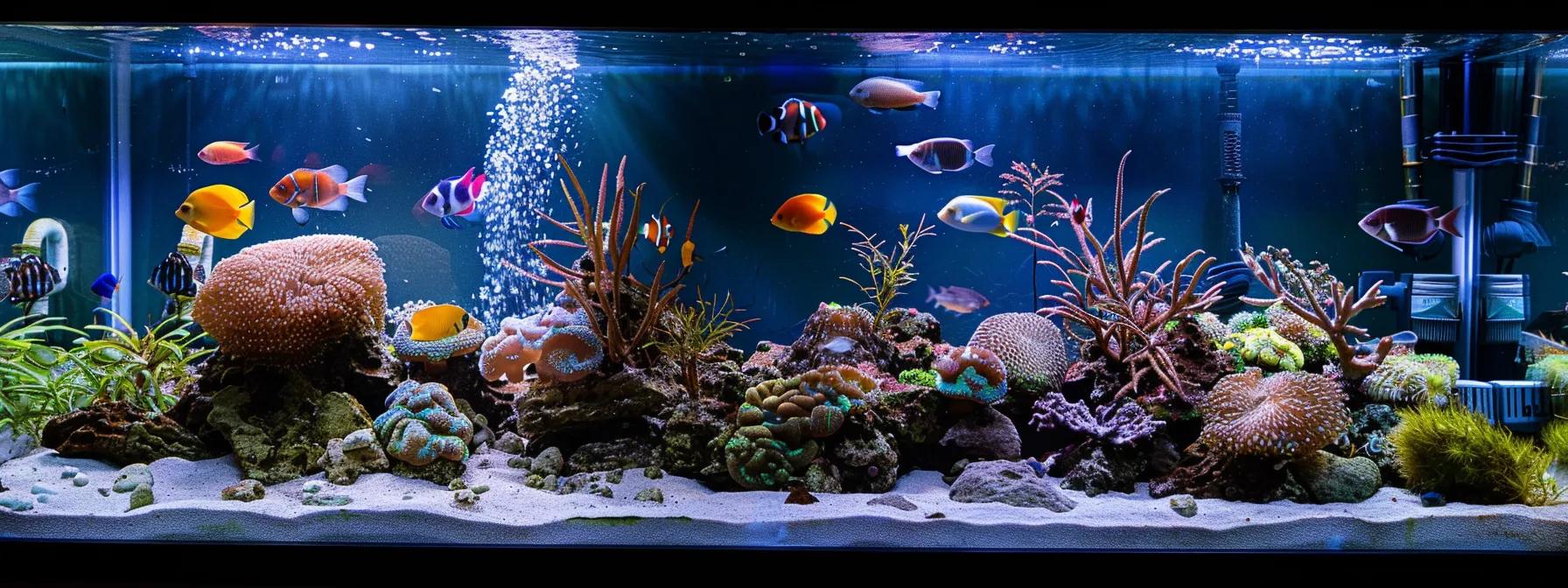
Several issues may arise: • Algae blooms from excessive light or nutrients can be managed by adjusting lighting and performing extra water changes. • Cloudy water might result from overfeeding, bacterial blooms, or inadequate filtration; remedy this by reducing feed, vacuuming the substrate, and cleaning the filter. • Fish diseases often occur due to poor water quality or stress; early signs include lethargy and unusual swimming. Quarantine sick fish and adjust water chemistry as needed. A systematic approach—observation, testing, and gradual intervention—helps resolve problems before they escalate.
How Do I Identify and Control Algae Blooms?
Algae blooms appear as green or brown films on glass, substrate, or decorations due to nutrient imbalances often caused by overfeeding or excessive light. Early signs include gradual discoloration and slimy layers. • Short-term control: reduce light duration, increase water changes. • Mid-term: clean the tank thoroughly with an algae scraper and siphon the substrate. • Long-term: introduce live plants and, if necessary, algae-eating species to naturally limit nutrient availability. Regular monitoring and adjustments keep algae growth under control.
What Causes Cloudy Water and How Can I Fix It?
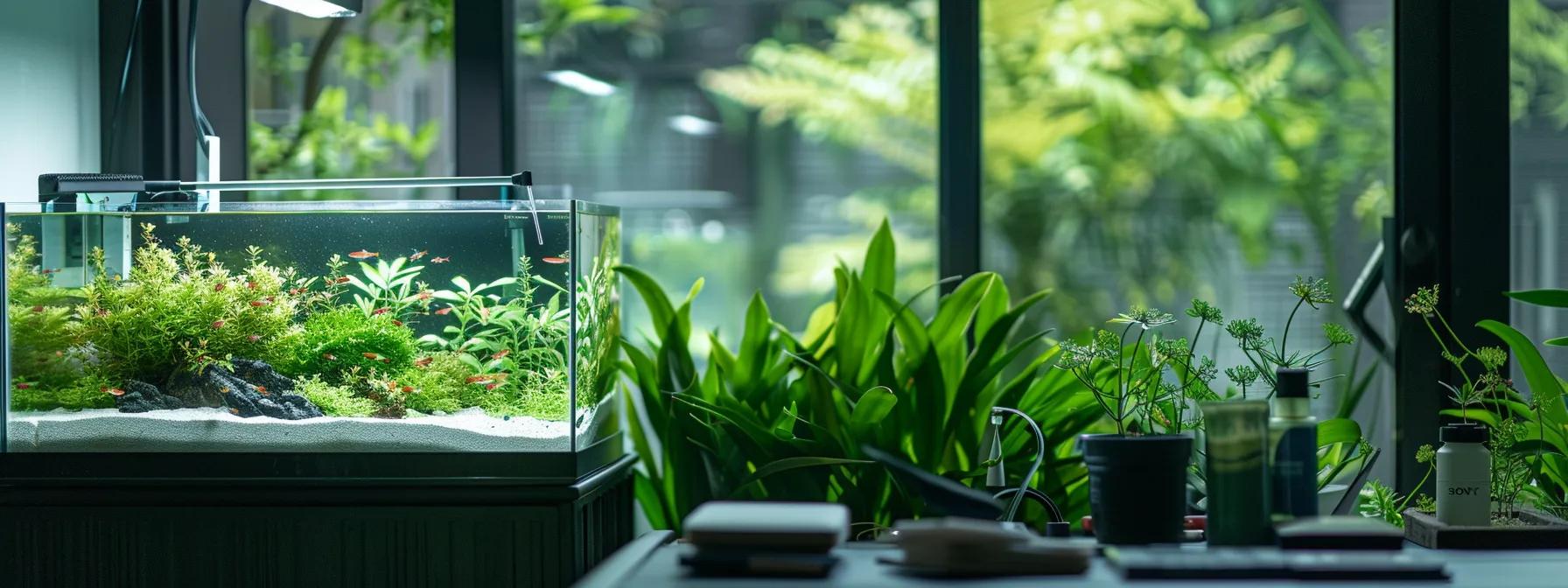
Cloudy water can stem from bacterial blooms, overfeeding, or disruptions during cycling. While temporary cloudiness may occur early in the nitrogen cycle, persistent cloudiness indicates issues like overstocking or clogged filters. • Reduce feeding to lower waste production. • Perform a partial water change and vacuum the substrate. • Gently rinse filter media in dechlorinated water to remove particulates while preserving beneficial bacteria. If the problem continues, test for bacterial infections or use clarifying agents designed for aquariums.
How Do I Recognize and Treat Fish Diseases?
Keep a close eye on fish behavior to spot disease early: • Signs include lethargy, loss of appetite, discoloration, clamped fins, or lesions. • Test water parameters first, as poor water quality can lead to disease. • Quarantine affected fish immediately to prevent spread. • Adjust water chemistry and, if needed, administer appropriate medications such as antibiotics or antiparasitics. A strict quarantine process for new fish can help prevent outbreaks, and maintaining a clean, stable environment is the best preventive measure.
How Can I Use Aquascaping Techniques to Beautify My Aquarium?
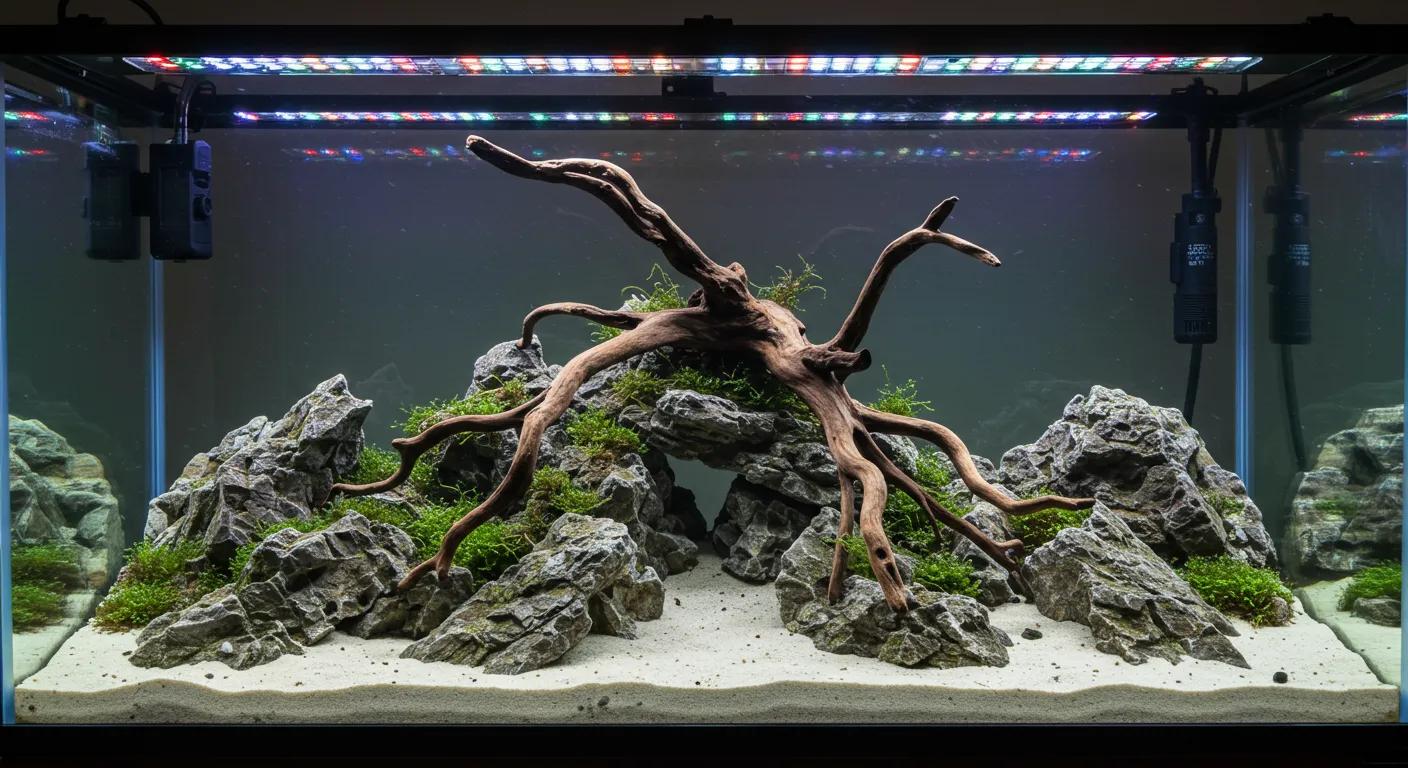
Aquascaping transforms your tank into a living art piece: • Plan your layout carefully by drafting a rough sketch inspired by natural aquatic landscapes. • Place large elements like rocks and driftwood as the foundation, then fill in with smaller ornaments and plants. • Vary plant textures and heights to add depth and visual interest. • Incorporate focal points such as an eye-catching rock or piece of driftwood to guide the viewer’s attention. Beyond aesthetics, a well-designed aquascape promotes beneficial bacterial growth and water circulation, contributing to overall tank health.
What Are CO₂ Systems and How Do I Set Them Up for Planted Tanks?
A CO₂ system can significantly boost plant growth in a planted aquarium: • CO₂ is essential for photosynthesis, improving plant growth, leaf color, and nutrient uptake. • A basic system includes a pressurized cylinder, regulator, diffusion device (reactor or inline diffuser), and a timer or CO₂ controller. • Securely position the cylinder, connect it to the regulator, and adjust the CO₂ output to meet your tank’s needs. • Diffuse the CO₂ evenly and use a timer to avoid over-dosing, which can stress aquatic life by lowering pH excessively. This system not only supports robust plant growth but also enhances the overall vibrancy of the underwater garden.
How Do I Breed Fish Successfully in My Aquarium?
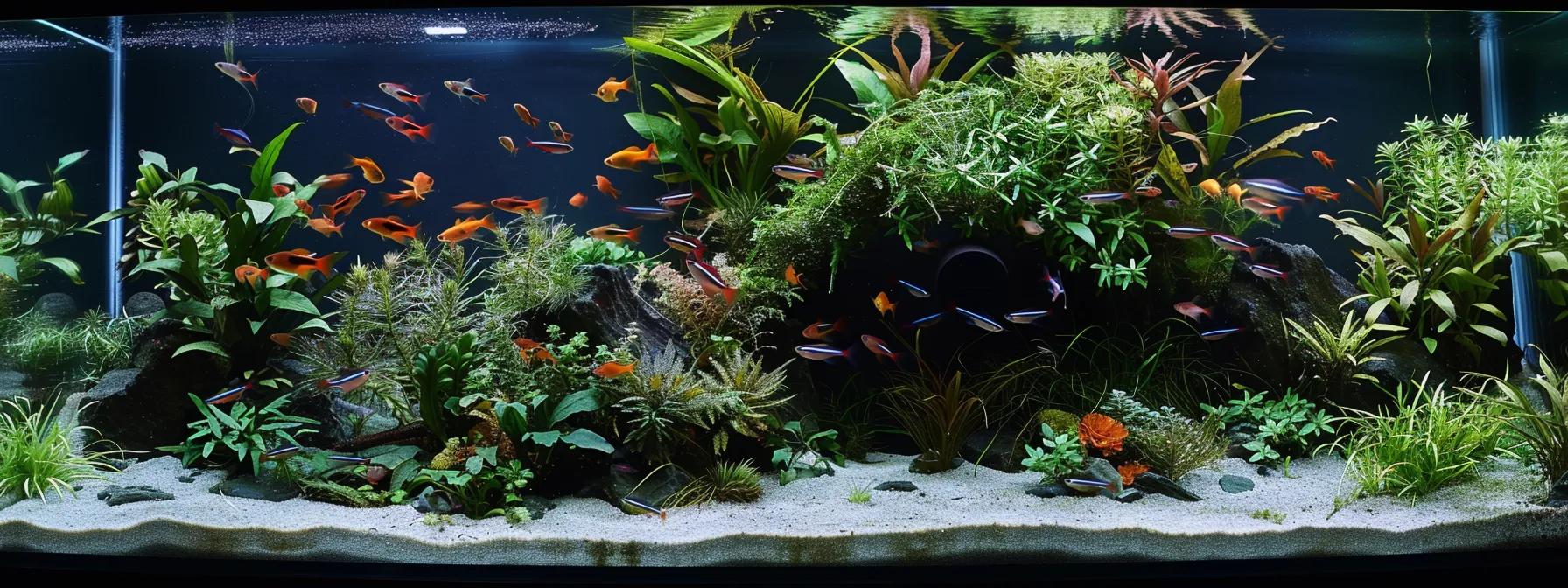
Fish breeding requires careful planning and attention to species-specific needs: • Set up a separate breeding tank or chamber with optimal water conditions, an appropriate substrate, and plenty of hiding places for fry. • Adjust water temperature, pH, and hardness to mimic the natural spawning conditions. • For many species, simulate seasonal photoperiod changes to trigger breeding. • Maintain low fish densities to reduce stress, and remove adults post-spawning to prevent predation on fry. • Have a plan for feeding fry with foods like infusoria or specialized fry food until they grow large enough for standard diets. A controlled breeding setup can lead to self-sustaining populations and adds an exciting dimension to the aquarium hobby.
Final Thoughts
Creating and maintaining a perfect aquarium requires thoughtful planning, careful equipment selection, meticulous setup, and ongoing maintenance. Every step—from choosing the right tank and cycling the nitrogen process to adding compatible fish and troubleshooting common issues—plays a crucial role in achieving a balanced ecosystem. By following these step-by-step instructions and monitoring water quality along with fish behavior, hobbyists can create an aquarium that not only serves as a captivating centerpiece but also stands as a testament to their dedication and passion. Advanced techniques like aquascaping and CO₂ supplementation further enhance both the visual appeal and functional stability of your aquatic environment.
Frequently Asked Questions
Q: What is the ideal aquarium size for beginners? A: Aquariums between 20 and 55 gallons are ideal because they are manageable, provide a sufficient water volume to buffer against rapid changes, and facilitate easier maintenance during the cycling process.
Q: How long does the aquarium cycling process take? A: The cycling process typically takes 4 to 6 weeks. During this period, beneficial bacteria build up to convert toxic ammonia into nitrate. Regular testing ensures that ammonia and nitrite levels drop while nitrates rise, confirming that the cycle is complete before adding fish.
Q: Can I add both fish and plants to my aquarium? A: Yes, combining fish and live plants creates a balanced ecosystem. Plants absorb excess nutrients such as nitrates, improve oxygen levels, and offer natural hiding spots. Just select species with compatible water parameters and light requirements.
Q: What equipment is most important for maintaining water quality? A: A high-quality filter, heater, and water conditioner are crucial. These ensure proper biological, chemical, and mechanical filtration, maintain a stable temperature, and neutralize harmful chemicals in tap water.
Q: How often should water changes be performed? A: Generally, a 20–30% water change should be done weekly. The frequency may vary based on the tank’s bioload and observed water clarity. Regular testing helps determine the best schedule.
Q: What causes algae blooms, and how can they be controlled? A: Algae blooms result from excessive nutrients (often due to overfeeding) and too much light. They can be controlled by reducing light exposure, performing extra water changes, cleaning the tank thoroughly, and introducing live plants or algae-eating species.
Q: How do I acclimate fish to a new aquarium? A: Float the sealed bag in the tank for 15–20 minutes to equalize temperature, then slowly mix in tank water over 30–60 minutes. This gradual process minimizes shock and stress, helping fish adapt to new water conditions.
| Equipment | Recommended Type | Key Benefit | Suitable For |
|---|---|---|---|
| Filter | Hang-on-back, canister | Efficient multi-stage filtration | All aquarium sizes |
| Heater | Submersible with adjustable thermostat | Consistent temperature control | Tropical aquariums |
| Lighting | LED lights | Energy-efficient, customizable spectrum | Planted and marine tanks |
| Water Conditioner | Liquid additive | Neutralizes chlorine and chloramines | Freshwater aquariums |
| CO₂ System | Pressurized cylinder with diffuser | Enhances plant growth | Planted aquariums |
| Thermometer | Digital, stick-on | Accurate temperature readings | All aquarium types |
| Air Pump | Compact with adjustable flow | Improves water oxygenation | Tanks lacking natural air exchange |
The table above summarizes essential equipment for any aquarium setup, outlining recommended types, key benefits, and suitable conditions. Selecting quality equipment based on your specific tank requirements ensures that the ecosystem remains balanced and healthy.
In summary, by combining careful planning, quality equipment, and regular maintenance, you can create an aquarium that is both a beautiful centerpiece and a self-sustaining ecosystem. Consistent monitoring of water parameters and proactive problem-solving are key to long-term success and enjoyment in your aquarium hobby.


